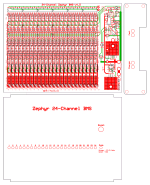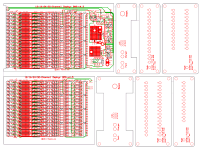GGoodrum
1 MW
I agree, the test instructions could be better, but I must say, this was never intended to be a project for "first-timers", so to speak. Nonetheless, the whole point of this thread is to provide help for those who are putting one of these together. The big problem with this is that although this board will work with a very wide variety of configurations and charging setups, each one of these might operate a bit differently, in terms of how the circuits operate. It makes it hard to have a "complete" set of testing instructions, covering all possible cases.
In the next version of this, which Richard and I are working on right now, we are using a new control scheme that should work the same way with virtually every setup. The end-of-charge detection logic will work the same way, for all setups, and there's no "adjustments" required. The circuit is simpler, with fewer parts, because we were able to eliminate the current measuring portion of the circuit. Anyway, this should help simplify the testing instructions for these new variants.
You make it sound like we are making money off of this stuff. :lol: The "profit" from these boards is about $5. Even if the margin was $100 a board, I'd have to sell literally hundreds of these in order to come close to making up what I've spent on test boards and unsold older versions. Also, the website is still down because I have been concentrating on these new versions, plus the related "Lite" variants, and haven't had time to build a new website.
Also, the website is still down because I have been concentrating on these new versions, plus the related "Lite" variants, and haven't had time to build a new website.
Anyway, if you have a problem with a setup, post as much detail as possible here, and we'll all try and figure out what is going on.
-- Gary
In the next version of this, which Richard and I are working on right now, we are using a new control scheme that should work the same way with virtually every setup. The end-of-charge detection logic will work the same way, for all setups, and there's no "adjustments" required. The circuit is simpler, with fewer parts, because we were able to eliminate the current measuring portion of the circuit. Anyway, this should help simplify the testing instructions for these new variants.
Gregb said:when you charge money for things, you have to keep it up to date
You make it sound like we are making money off of this stuff. :lol: The "profit" from these boards is about $5. Even if the margin was $100 a board, I'd have to sell literally hundreds of these in order to come close to making up what I've spent on test boards and unsold older versions.
Anyway, if you have a problem with a setup, post as much detail as possible here, and we'll all try and figure out what is going on.
-- Gary







